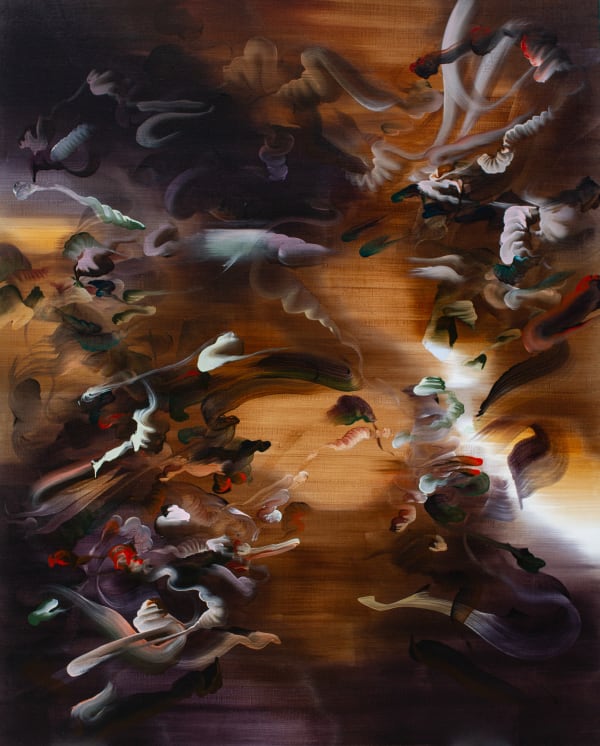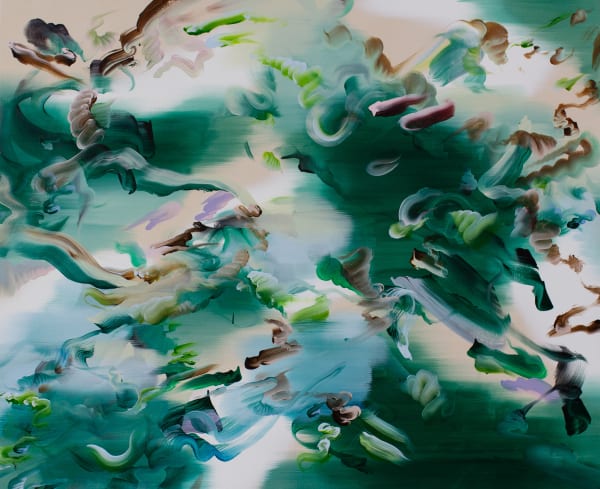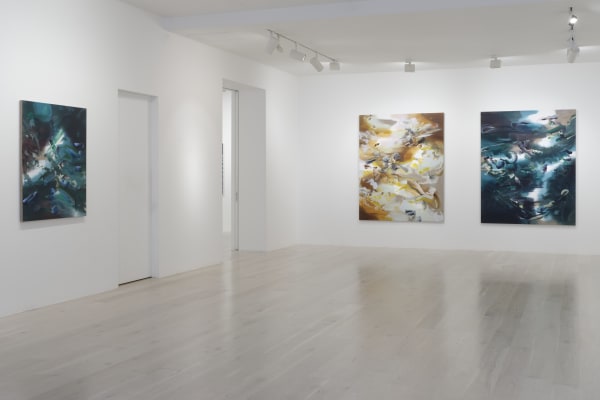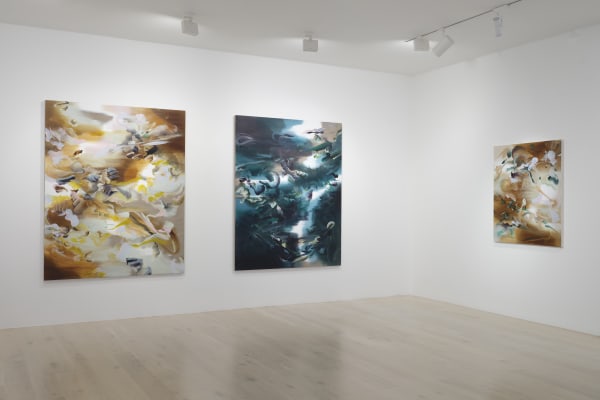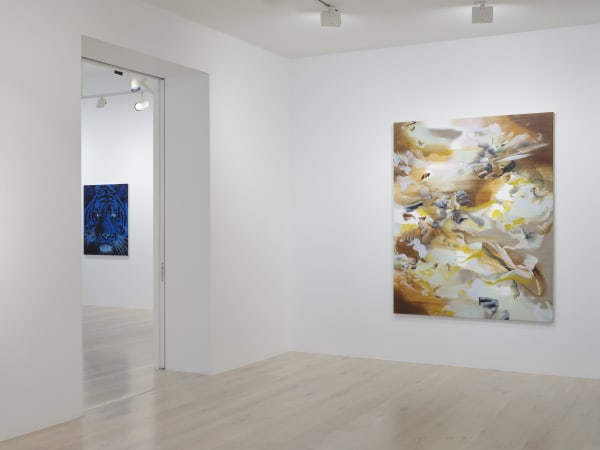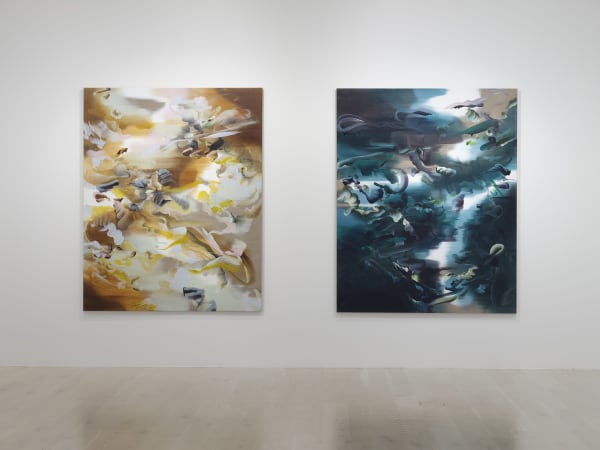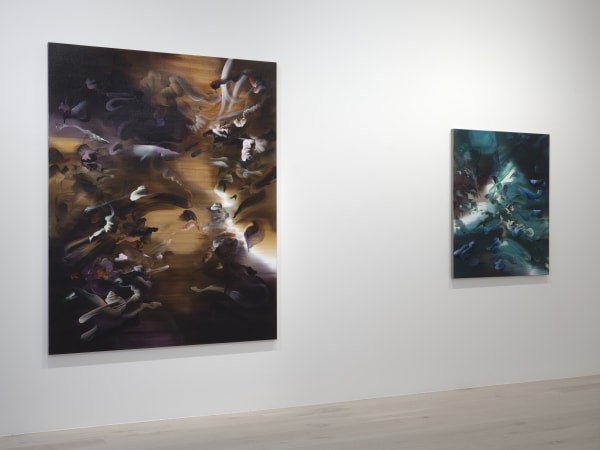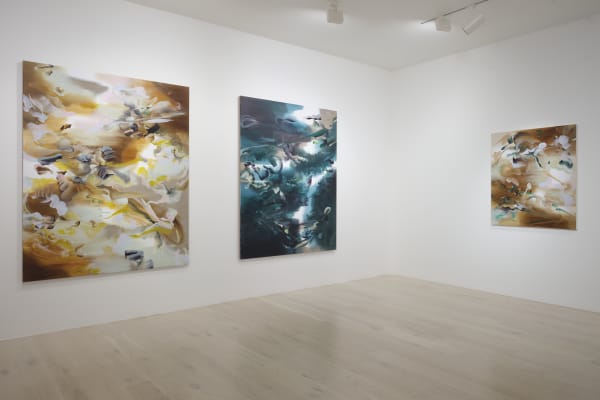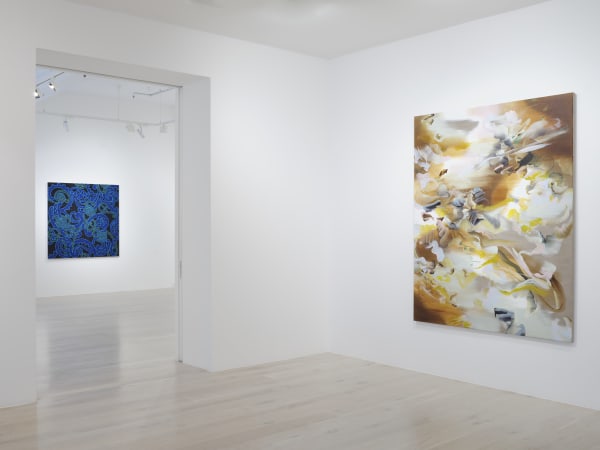Life Is Understood In Circles: Grace Wright
I’m always trying to paint light, and explore the duality of light and dark. In my paintings, I pay close attention to very specific spots where light is in play. Light’s effect on colour is complex, and getting it right involves really observing distinctions in colour and tonality. For example, in a patch of brown there can be tones of yellow, blue or purple, and that has an effect on the other colours around it. It can either harmonise, cause discord, or sometimes create an unusual light effect.
Grace Wright is one of the most exciting talents to emerge in the New Zealand art scene in recent years. She has developed a sophisticated painting practice based in abstraction, yet her works often feel representational. This slippage between two very distinct forms of image making is an effect of her skilfully attuned palette and expressive mark making. Wright has developed a language of subtle tonal contrasts and gestural brush work, creating a dynamic sense light and shadow. The resulting layered visual field has a surreal, atmospheric quality. One effect of this is a persistent impression of figure on ground – giving rise to representational readings of what are essentially abstract images.
-
 Grace Wright, Nothing Is Ever Truly Lost, 2023
Grace Wright, Nothing Is Ever Truly Lost, 2023 -
 Grace Wright, Journey In The Night, 2023
Grace Wright, Journey In The Night, 2023 -
 Grace Wright, Carrying The Light With You, 2023
Grace Wright, Carrying The Light With You, 2023 -
 Grace Wright, Endgazing, 2023
Grace Wright, Endgazing, 2023 -
 Grace Wright, Sweetness and Life, 2023
Grace Wright, Sweetness and Life, 2023 -
 Grace Wright, Illusion Of A Momentary Truth, 2023
Grace Wright, Illusion Of A Momentary Truth, 2023 -
 Grace Wright, Time Will Tell, 2023
Grace Wright, Time Will Tell, 2023 -
 Grace Wright, Thread Of A Distant Universe, 2023
Grace Wright, Thread Of A Distant Universe, 2023 -
 Grace Wright, Luminous, 2023
Grace Wright, Luminous, 2023
Grace Wright is one of the most exciting talents to emerge in the New Zealand art scene in recent years. She has developed a sophisticated painting practice based in abstraction, yet her works often feel representational. This slippage between two very distinct forms of image making is an effect of her skilfully attuned palette and expressive mark making. Wright has developed a language of subtle tonal contrasts and gestural brush work, creating a dynamic sense of light and shadow. The resulting layered visual field has a surreal, atmospheric quality. One effect of this is a persistent impression of figure on ground – giving rise to representational readings of what are essentially abstract images.
Life is Understood in Circles is Wright’s most recent body of work. Time and reflection have steered Wright towards a more-restrained approach to colour and gesture. Yet these paintings remain expressive, bold, and fantastically colourful. “Rather than relying on lots of gestural marks, I’ve been paring them back,” she states. “I think it’s mainly just trying to make each gesture count more. Colour is an important part of that. I’ve been making the paintings quite tonal, for instance using two tones of green that are very similar to each other but slightly different. This way, the painting becomes more about the sense of light within the palette, which has become key to the overall composition. Each painting is built on the last – I look at a particular area that I like and then extract the palette, sometimes inversing the colours. In the past I would have used all of these colours in one work. It’s been a good challenge to pare that back.”
Wright was recently based in Australia while producing work for the Sydney Contemporary Art Fair. This change in location had an effect on her painting, as she responded to a different quality of light and colours in the environment. This shifted her choice of palette, with vivid blues and notes of red and ochre echoing entering the work, referencing the colour of the earth. Return to New Zealand has seen her shift to a greener palette, once again responding to subtle cues in her surroundings. Wright observes that this as an instinctive process connected to the place of production. “After a stint in Sydney, I was very aware of the specifics of this environment. Light and shadow in New Zealand are very different to elsewhere. Reflecting this, the palette I have used is more constrained.” Nevertheless, the shift in palette is subtle, and Wright’s paintings remain richly colourful.
A further shift can be seen in Wright’s application of paint. The paintings presented in Life is Understood in Circles bring a subtle paring back to her distinctive gestural brush marks, with fewer such marks in each work and the marks themselves more studied. “The marks are a kind of language. With these works, I was thinking through how to simplify that language, while also making it more nuanced. I think that was a matter of subtlety. I felt that the marks were too much on the surface, so I’m trying to push some back into the picture plane and bring others forward. Then they are more intentional, and more subtle.” For all of this carefully considered reinvention, the works presented in Life is Understood in Circles remain instantly recognisable. Wright has created a distinctive aesthetic that continues to shine through as her work develops.
Though Wright has worked hard to refine her practice, painting still holds an element of spontaneity for her. “Sometimes I still achieve unexpected results, and some of the best parts of the paintings are accidents. For instance, painting wet on wet and dragging the gesture can create unforeseen outcomes, particularly in how the paint blends. Working that way is conducive to creating a sense of atmosphere. Once a painting is further developed, it is harder to get the same effect.” The sense of atmosphere Wright references is a key part of what has made her work successful.
Wright’s paintings are works of gestural abstraction, yet they carry a sense of something like representational image making. In many ways, this relates to her purposeful engagement with Renaissance painting, especially the spectacular visual riches of the Baroque period. She states, “I’m always trying to paint light, and explore the duality of light and dark. In my paintings, I pay close attention to very specific spots where light is in play. Light’s effect on colour is complex, and getting it right involves really observing distinctions in colour and tonality. For example, in a patch of brown there can be tones of yellow, blue or purple, and that has an effect on the other colours around it. It can either harmonise, cause discord, or sometimes create an unusual light effect. I will use whatever gives the dynamic or balancing quality that the painting needs.” Finding a harmony between colour, tone, and gesture is a complex feat, though one that Wright continues to accomplish with flair.



